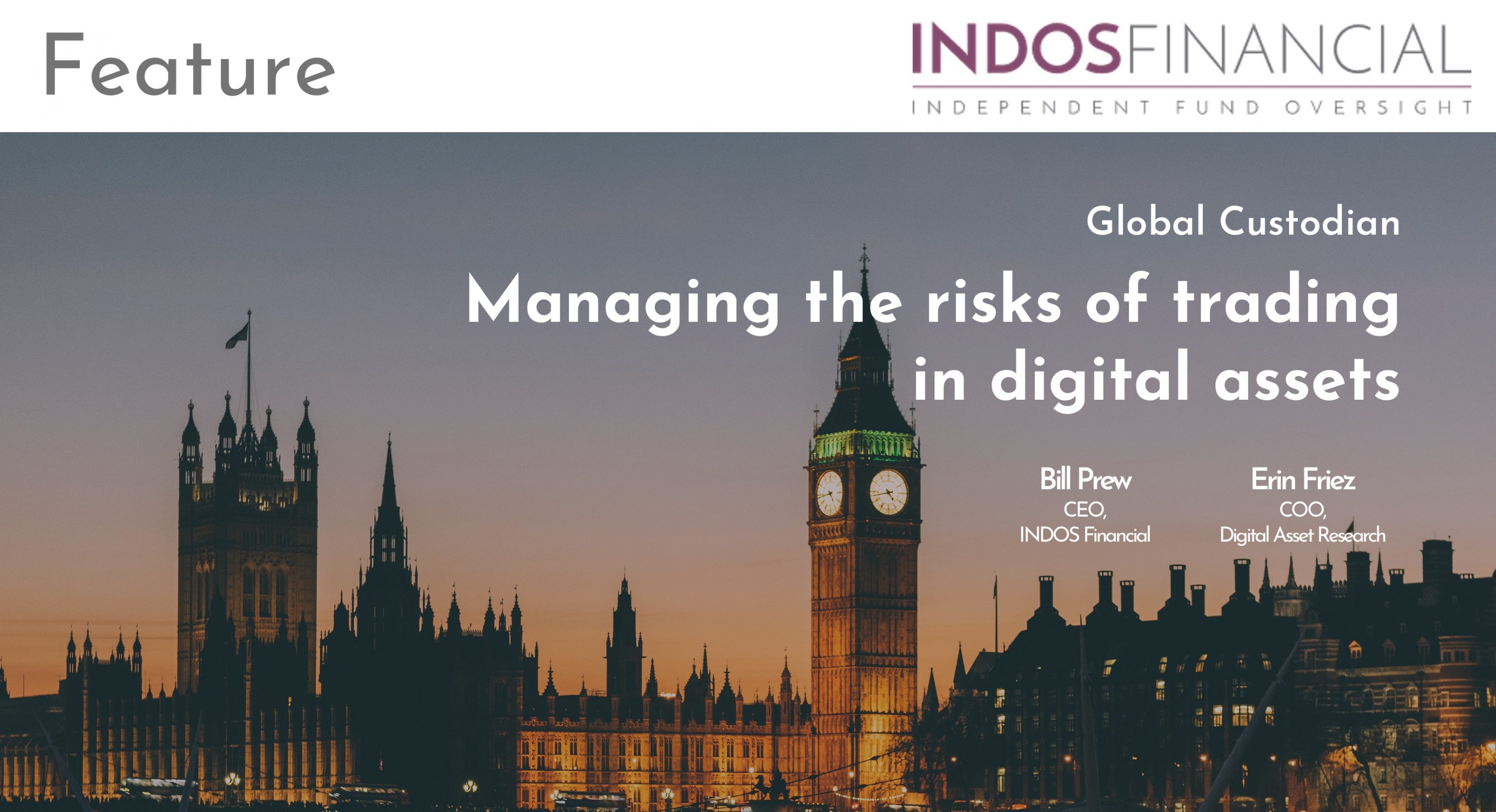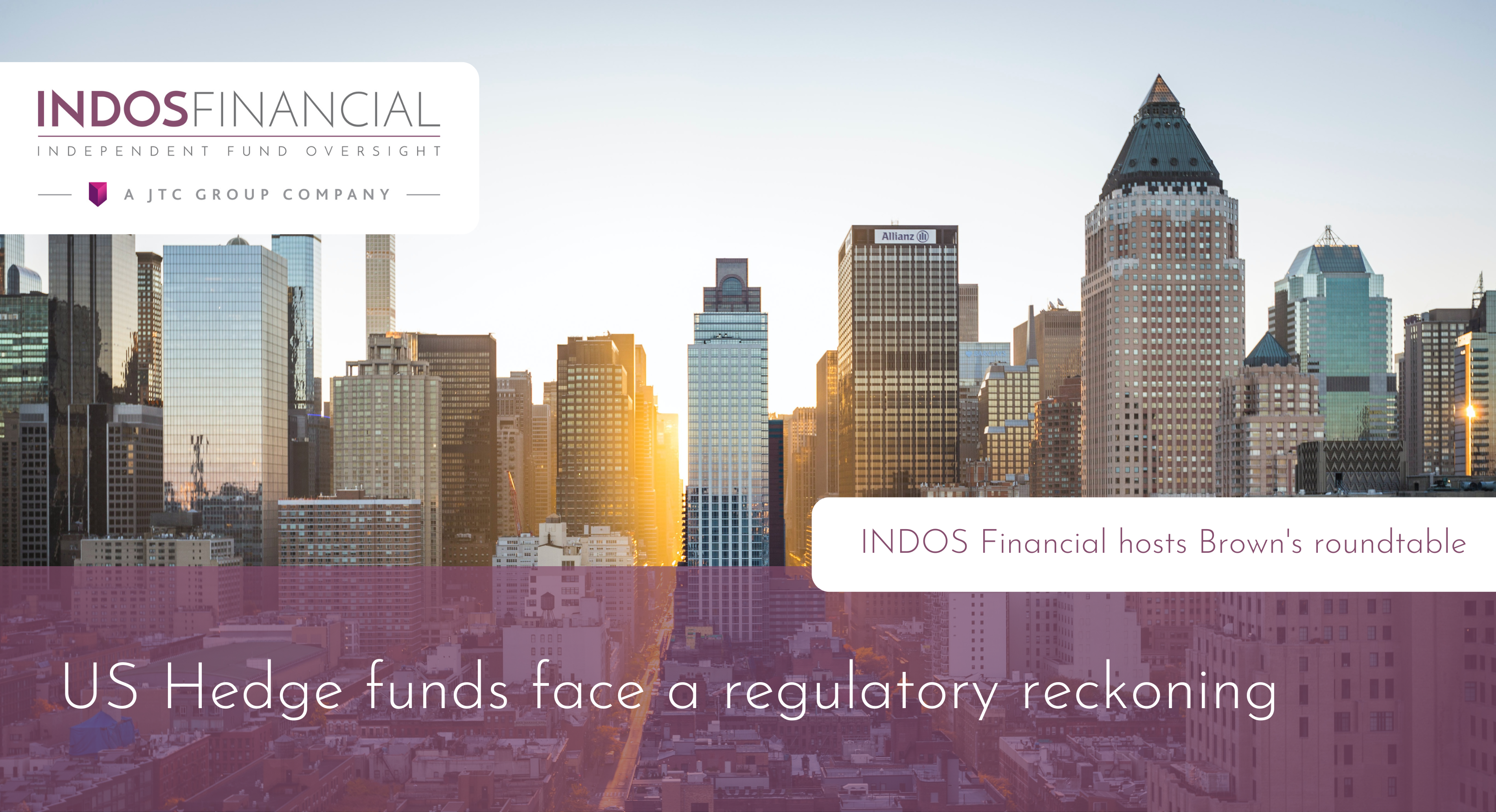How can institutional investors assess and manage the risks associated with digital assets and the new market space, and what role does a depositary play in this ecosystem?
Digital assets, which first emerged more than 11 years ago with the creation of Bitcoin, have historically been the preserve of retail investors. However, interest and investment in digital assets by traditional fund management firms has grown as the industry slowly matures. Earlier this year, Paul Tudor Jones announced he was buying Bitcoin as a hedge against inflation. Elsewhere, Fidelity launched its Fidelity Bitcoin fund in August while MicroStrategy recently purchased more than 21,000 Bitcoins. The estimated total market capitalisation for digital assets, principally cryptocurrencies, is in excess of $350 billion, of which an estimated $6 billion is managed by digital asset focused funds. The market continues to see growth month over month.
Unlike traditional asset classes, the often-opaque nature of the digital asset market presents many unique challenges. More than 350 digital asset exchanges currently operate in a globally fragmented market with varying degrees of security, operational integrity and regulatory standards. Headlines about exchanges losing client funds or facing regulatory scrutiny are common. It can be difficult to know what providers in the market are safe and trustworthy.
So how can institutional investors assess and manage these risks? Evaluating the quality and transparency of digital asset exchanges is critical to managing the risks of trading in digital assets. Once invested, institutional investors can also take comfort from the independent oversight role performed by a fund depositary that monitors transactions and verifies ownership of the digital assets.
When evaluating digital asset exchanges, there are several qualitative and quantitative factors institutions need to consider.
Qualitative factors
Due to the global nature of this market and the lack of strong regulatory oversight in many jurisdictions, qualitative factors – like robust KYC/AML policies – need to be examined closely. Such policies are designed to keep bad actors out and provide the basis for effective market surveillance. Unsurprisingly, exchanges with nonexistent or insufficient AML/KYC policies have been found more likely to disseminate what appears to be fake trading volume data.
It is also important to evaluate an exchange’s track record on safeguarding assets. A history of hacks, frequent unplanned downtime or a lack of transparency about operational security are indicative of vulnerabilities.
Firms should also verify that digital exchanges have transparent governance structures, a qualified leadership team, routinely updated business continuity plans, uniformly enforced fee structures, sound banking counterparts and decent insurance policies.
Quantitative Assessments
Manipulation in the digital asset spot market is a practice well known to both market participants and regulators. The US Securities and Exchange Commission has repeatedly said that the lack of a price that is free from manipulation is among one of its top concerns in the market, and a primary reason for its continued refusal to authorise a Bitcoin ETF.
Many exchanges will report large volumes, but a closer look reveals trading patterns and order book data that does not correspond with those volumes. The ability to flag suspicious trading patterns can help address concerns over wash-trading, inflated volumes or manipulated data.
Correlation testing is one example of a quantitative metric that can flag outlier behaviour. The digital asset market, while globally fragmented, is, in large part, an integrated marketplace with consistency of market activity across legitimate exchanges. By comparing the volumes and prices across exchanges of different sizes, jurisdictions and user profiles, it is easy to spot erroneous practices. Having a trusted source of transparent data in the digital asset space is key to spotting red flags.
The role of the depositary
Under the Alternative Investment Fund Managers Directive (AIFMD), EU and some non-EU based asset managers marketing alternative investment funds in Europe are required to appoint a fund depositary. The depositary is responsible for performing independent oversight of the fund, monitoring cash flows daily, verifying the ownership and existence of assets and ensuring the fund is managed in accordance with its prospectus.
To date, only a small number of digital asset funds have been set up which are subject to AIFMD depositary oversight. Due to the complexities of digital assets, few depositaries have invested the time to develop the necessary systems and procedures to take on these mandates. This lack of engagement has held back the development of the digital asset fund sector.
The depositary to a digital asset fund will independently oversee the trading and settlement activity of the fund, monitoring transfers to and from exchanges, movements of assets between exchanges and the fund digital asset custodian, while reconciling assets to the relevant blockchain and overseeing the valuation function of the fund. Asset managers and investors can take significant comfort from this independent oversight, which is performed on an ongoing basis.
The case for independent oversight of exchanges
Digital assets are a novel concept and the absence of effective oversight is a major factor impeding the sector’s growth. By leveraging depositaries – who have a robust track record in safeguarding investor protection under AIFMD and UCITS – the digital asset funds industry could enjoy exponential inflows moving forward.
By Bill Prew, CEO, INDOS Financial and Erin Friez, COO, Digital Asset Research
This article first featured on Global Custodian here: https://www.globalcustodian.com/blog/managing-the-risks-of-trading-in-digital-assets/




